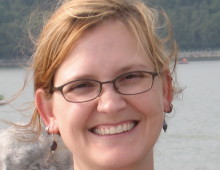Steven Hallam, University of British Columbia
CIFAR Scholar and Associate Professor, University of British Columbia Department of Microbiology & Immunology, Life Sciences Institute I have collaborated with the JGI since 2002 before the CSP program came online. These collaborations have spanned my postdoctoral years with Ed DeLong [now at the University of Hawai’i, Mānoa] and my time as an independent investigator at the University… [Read More]





